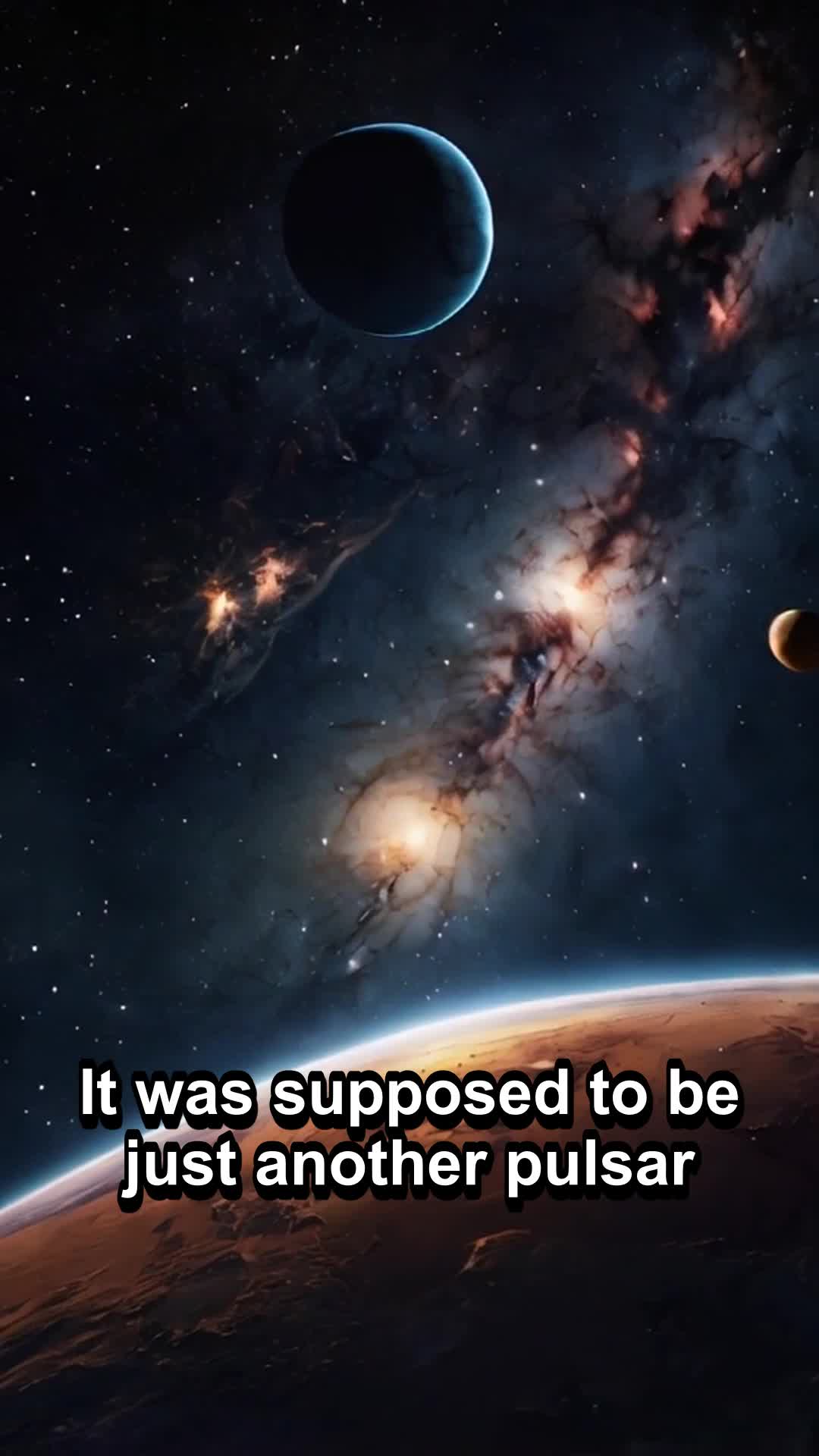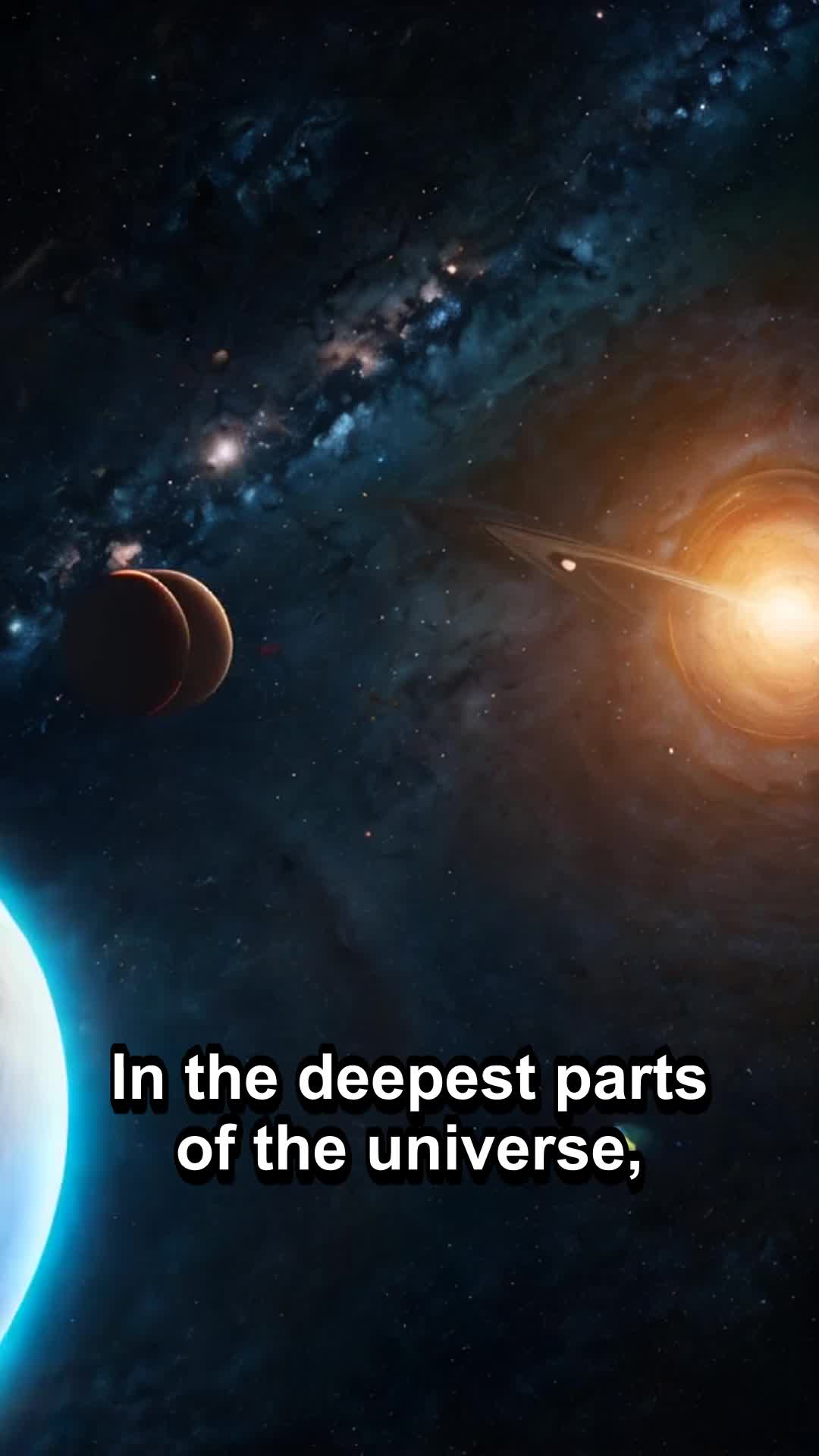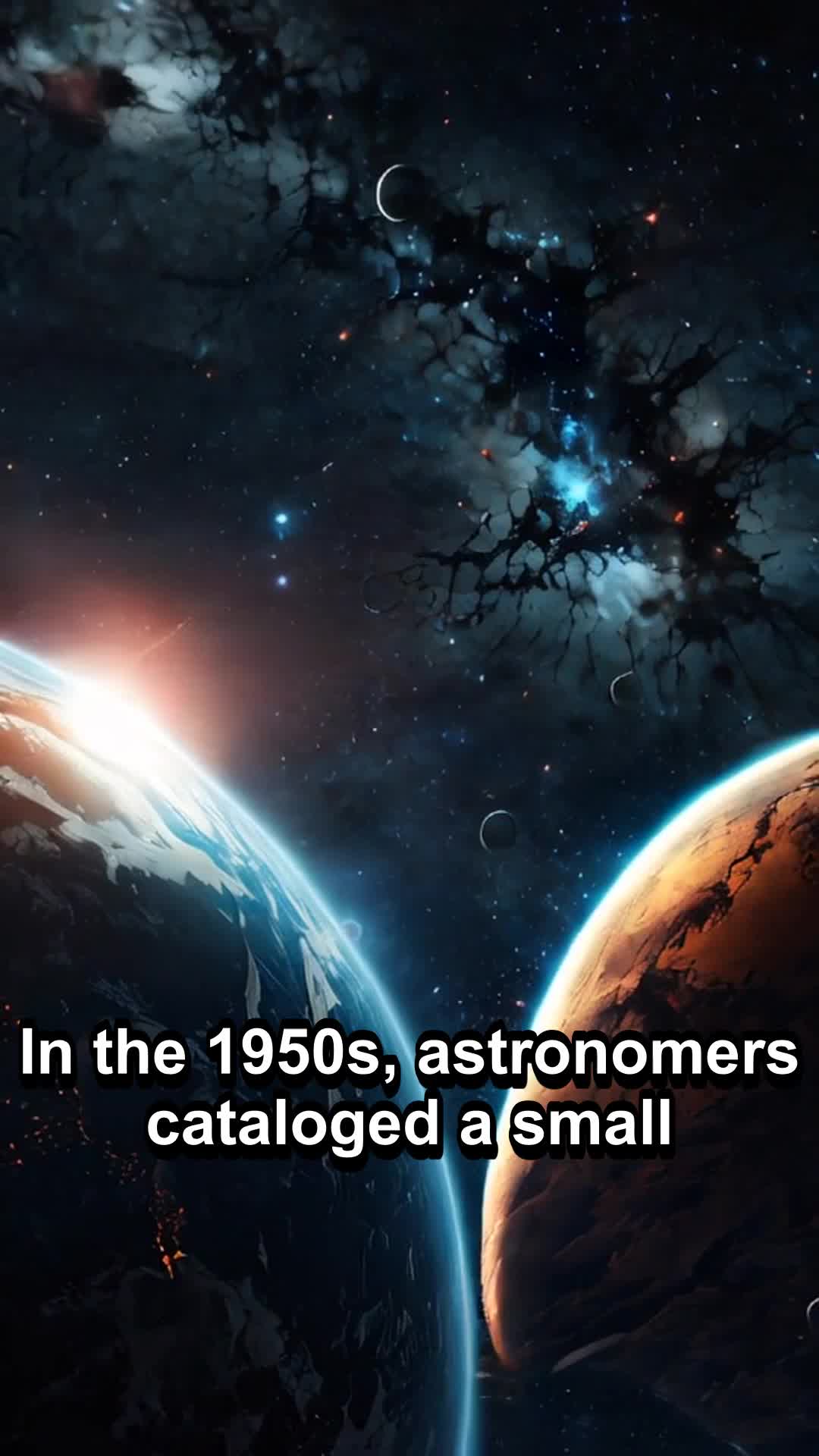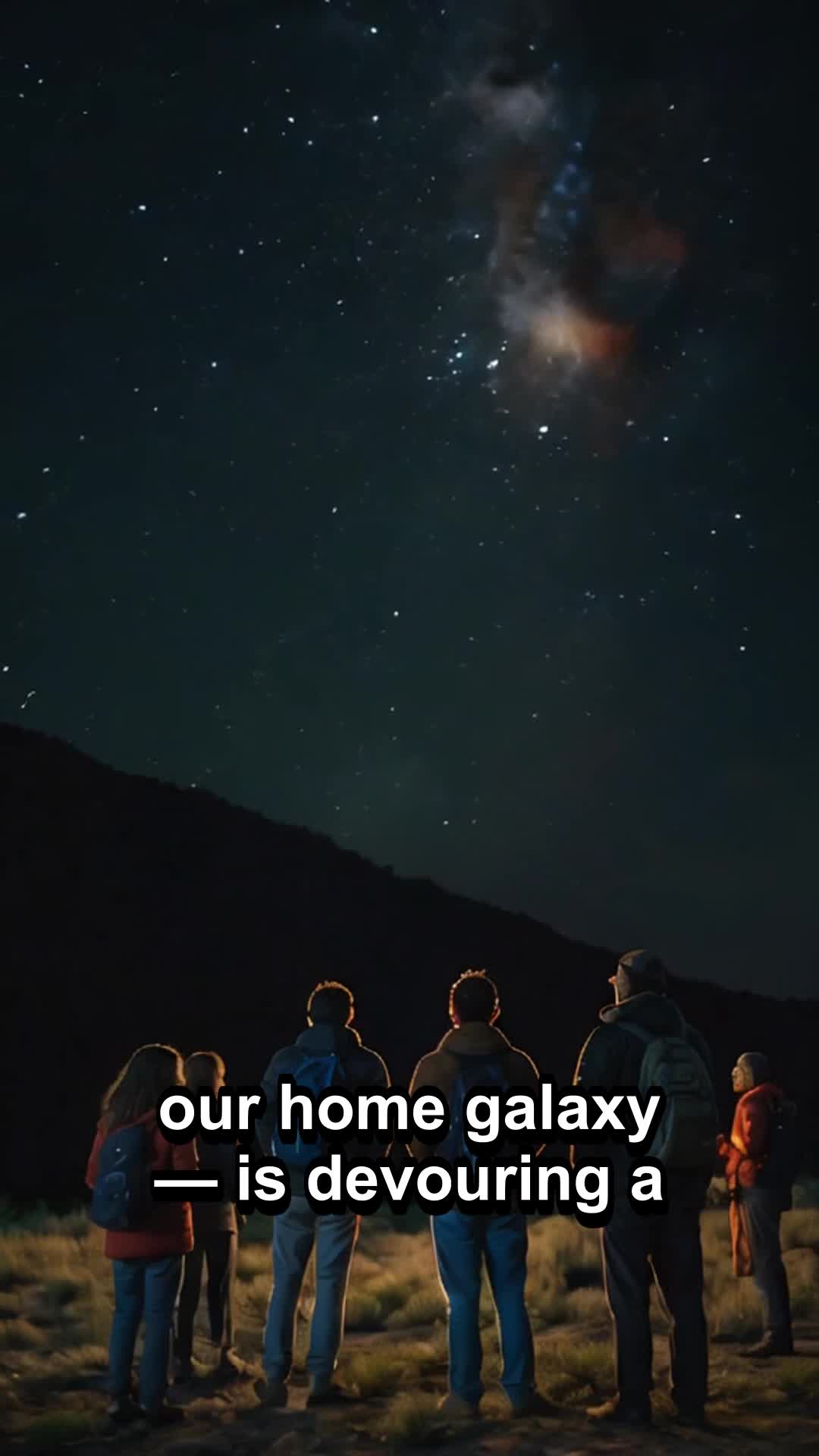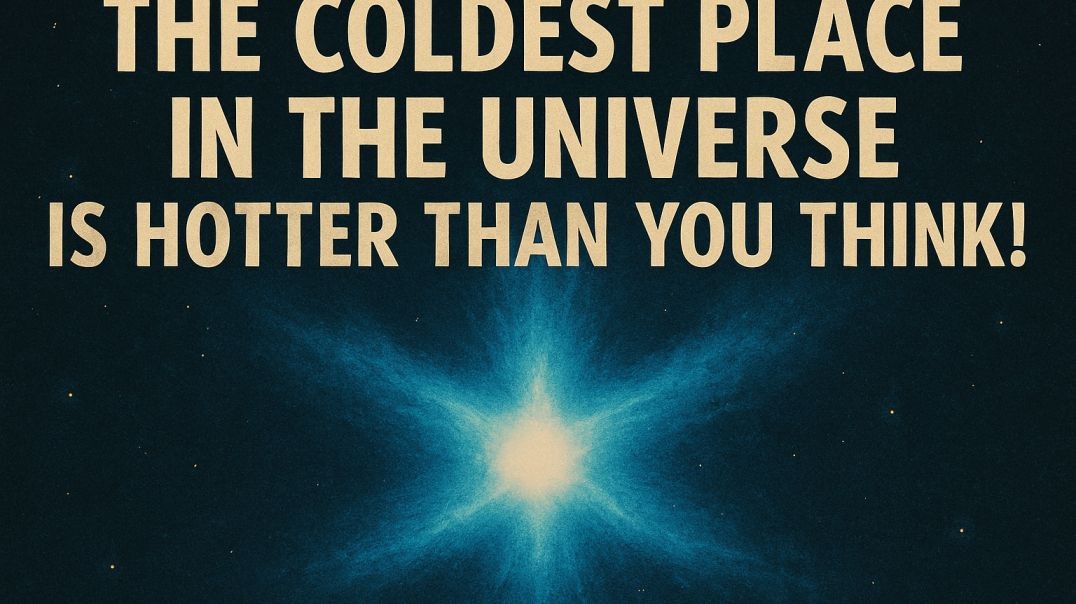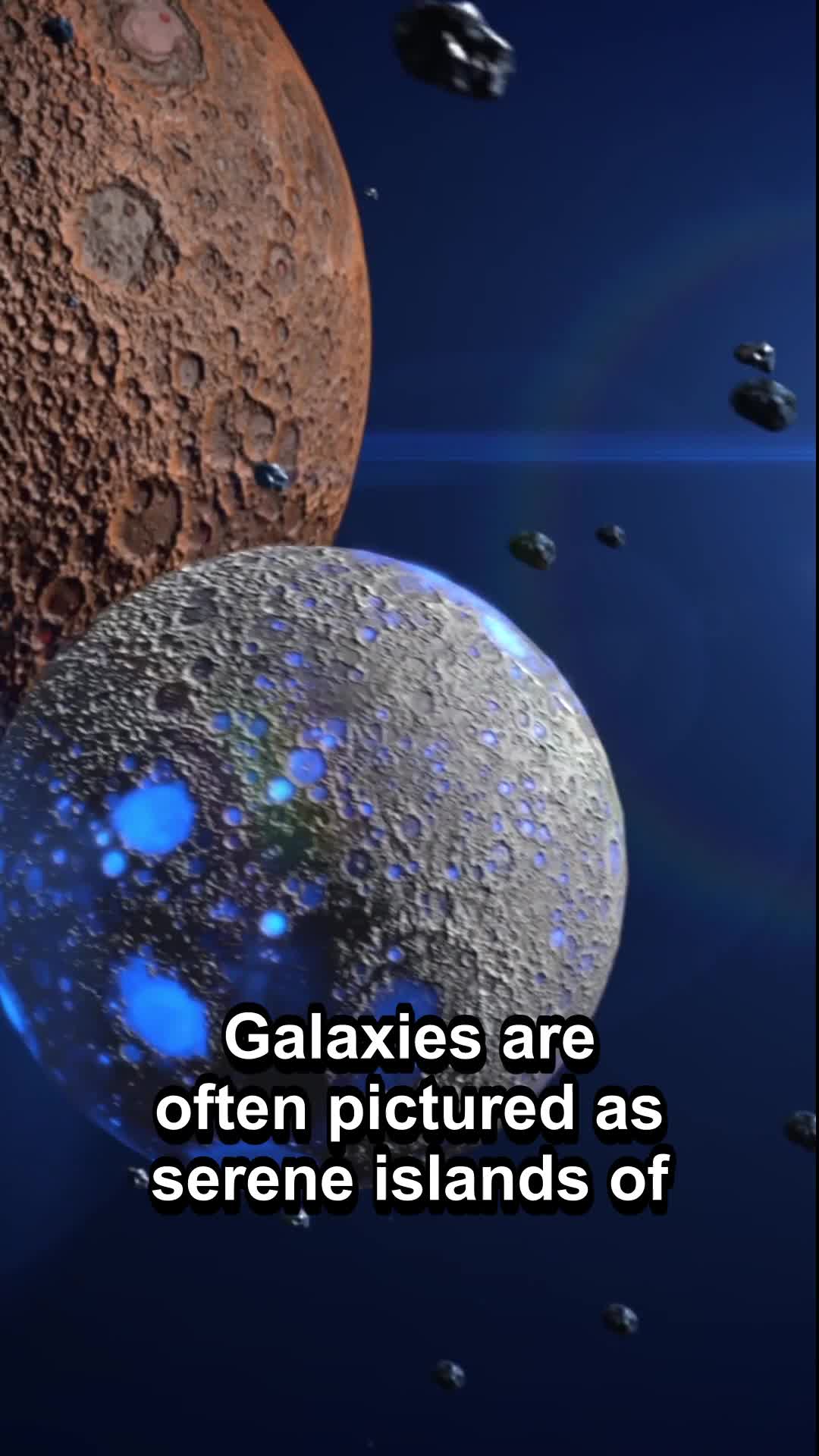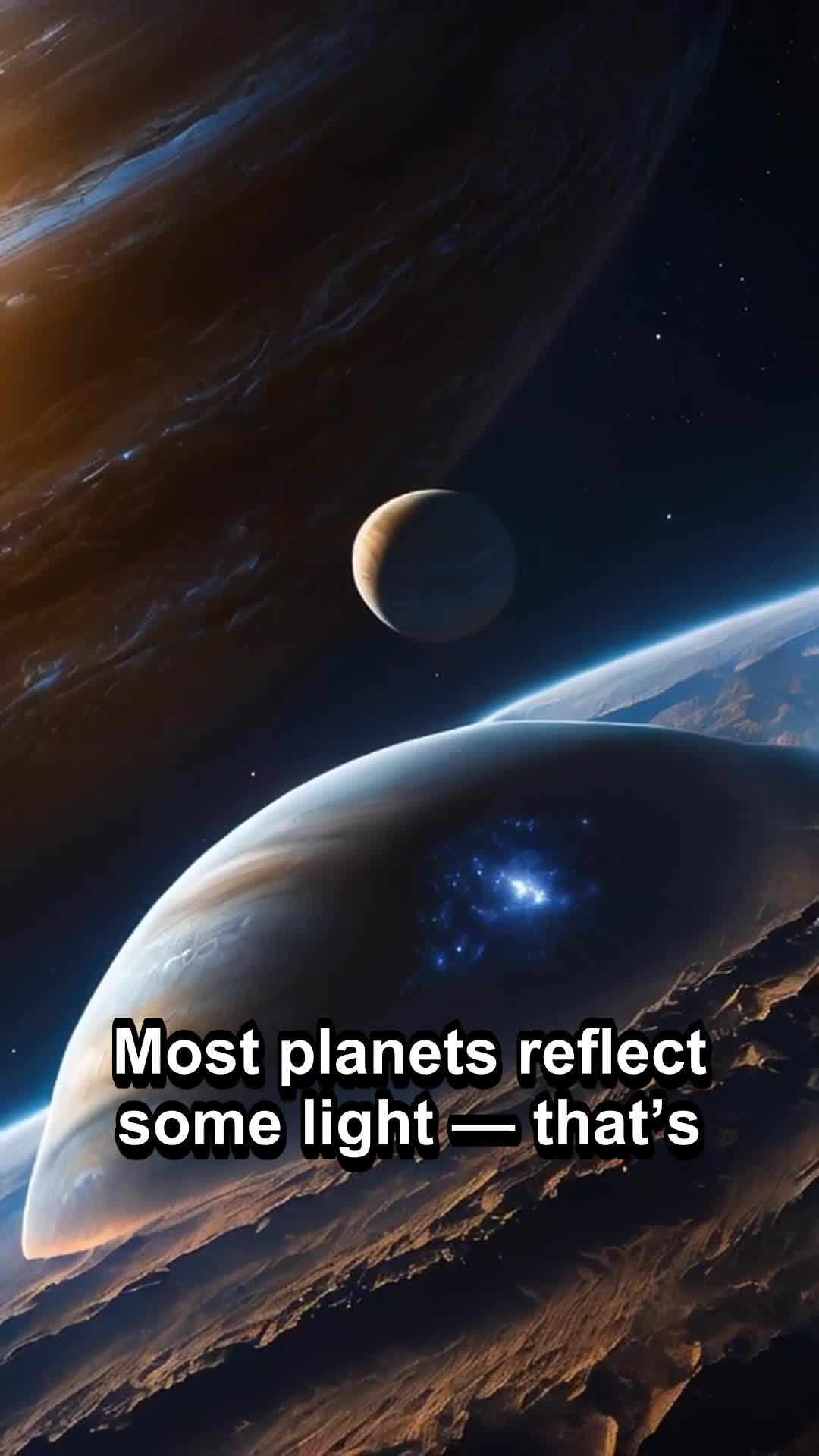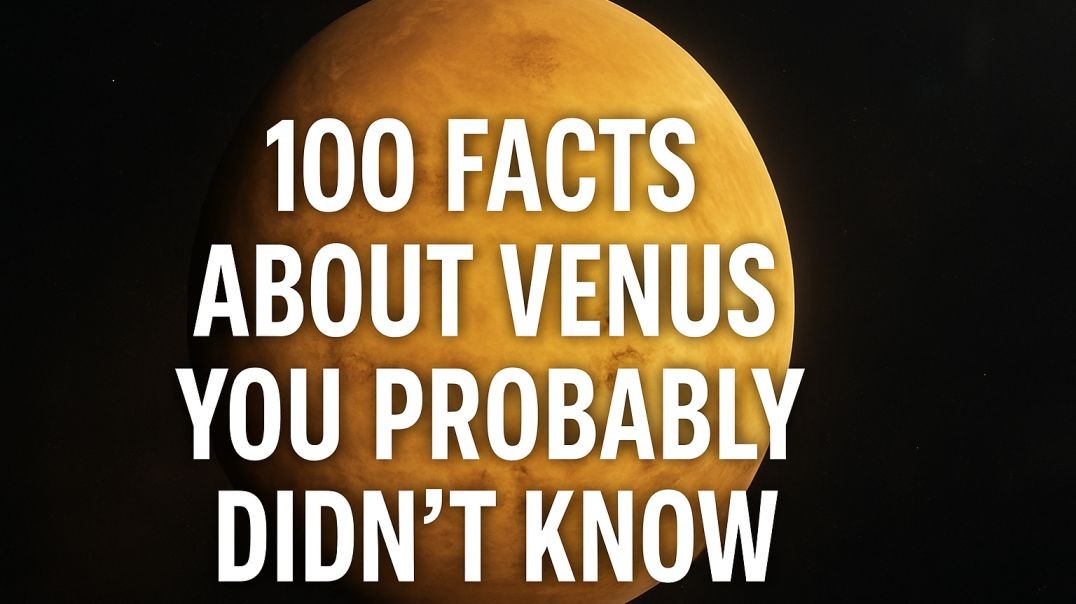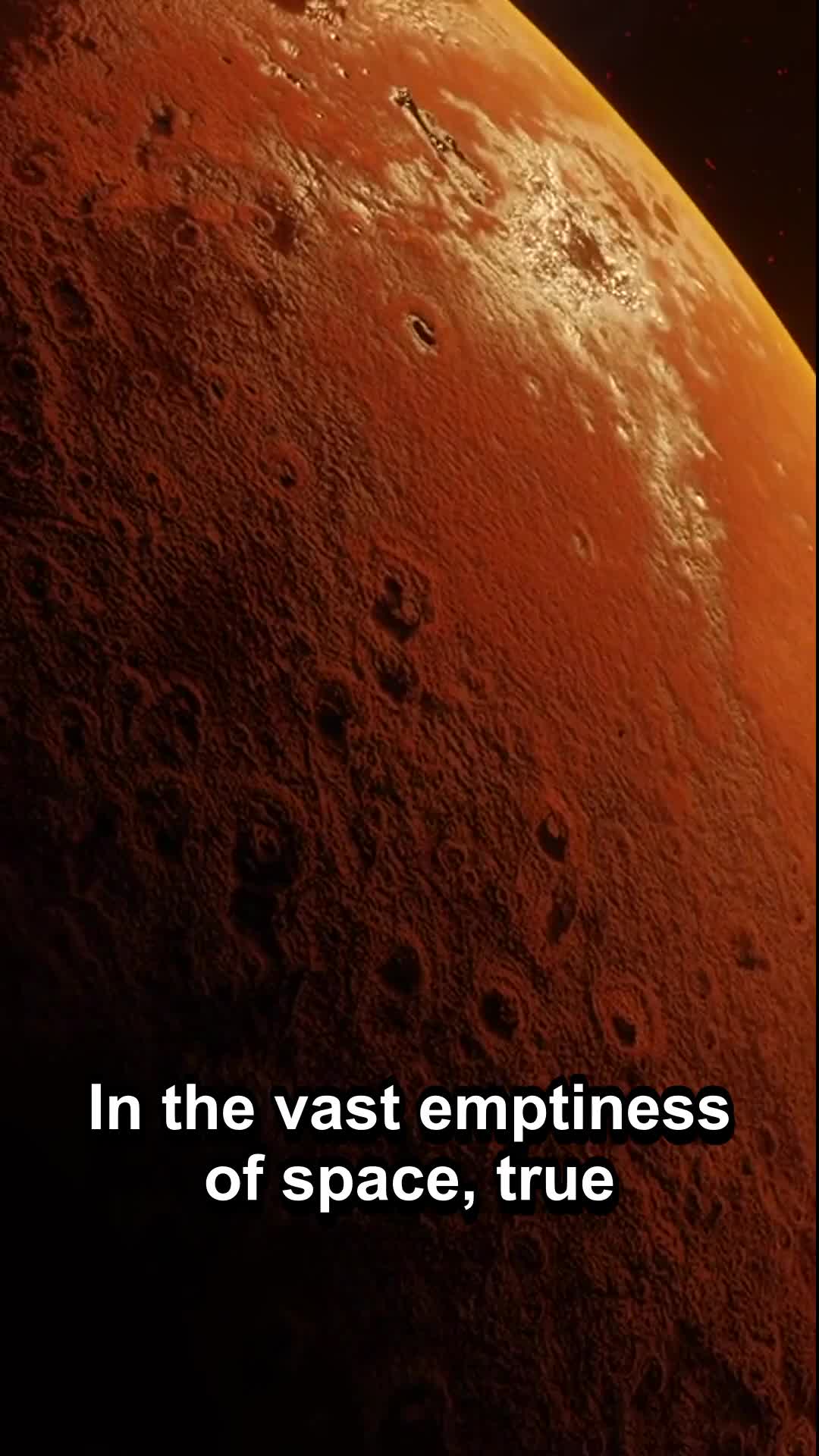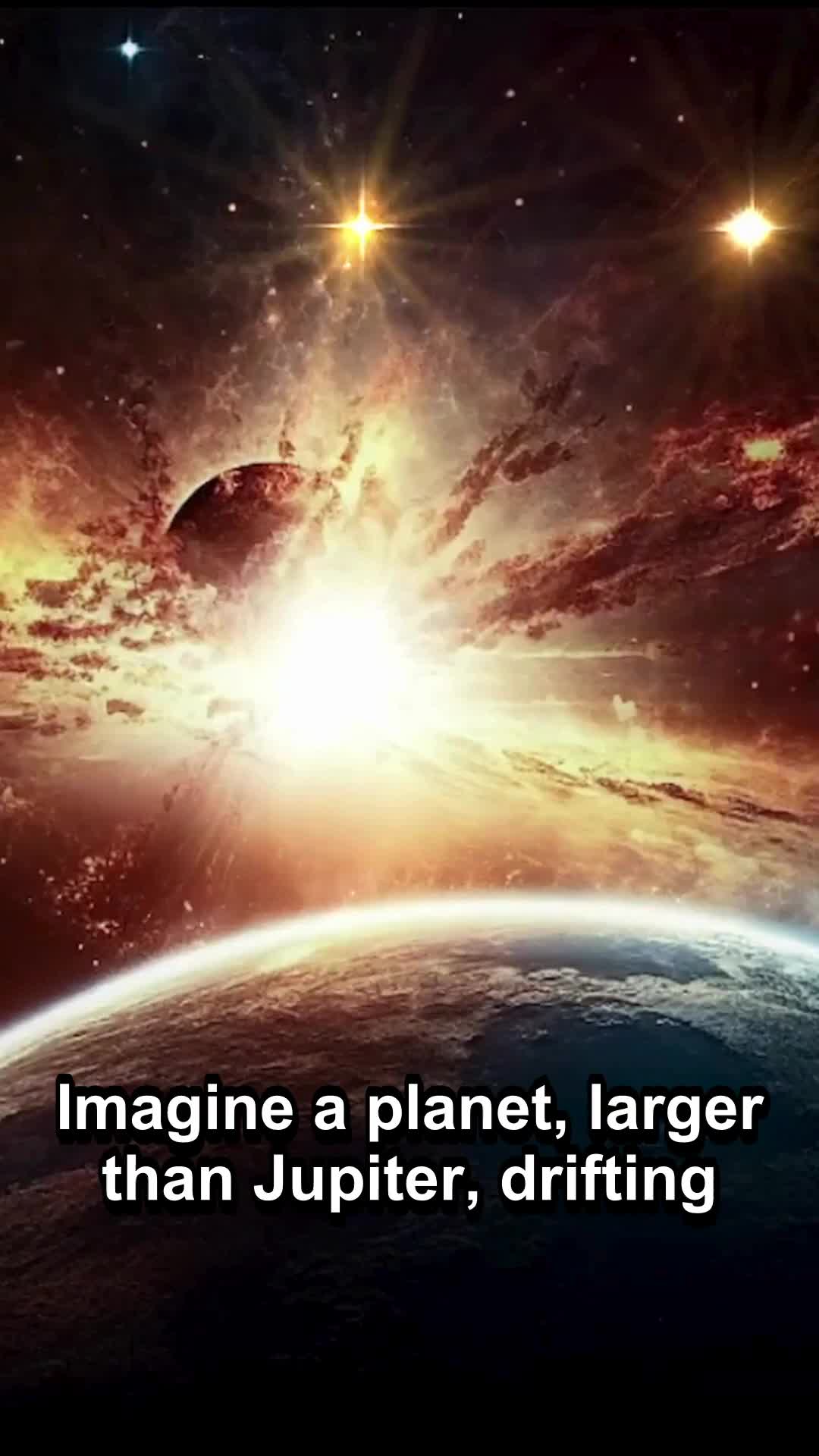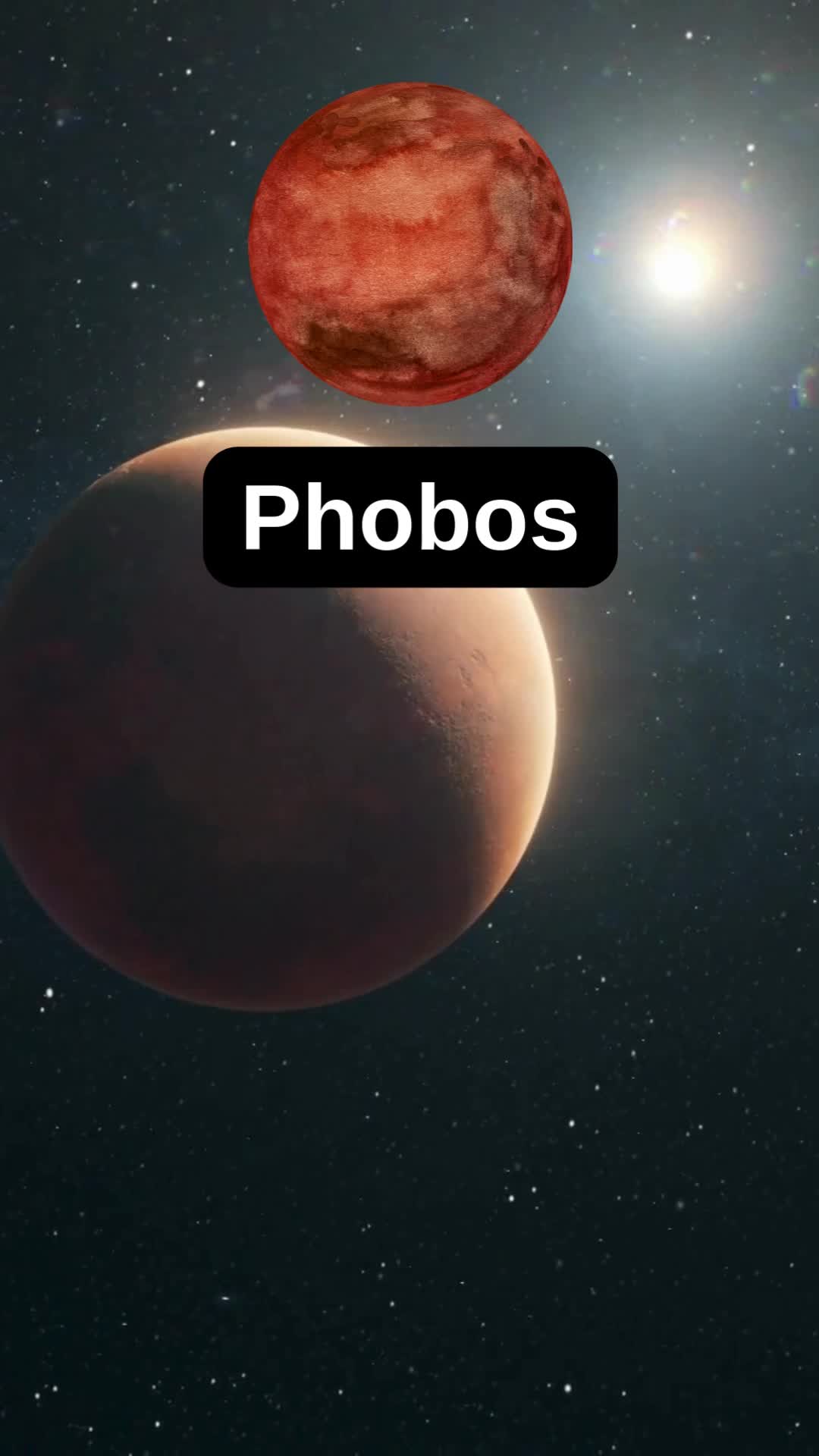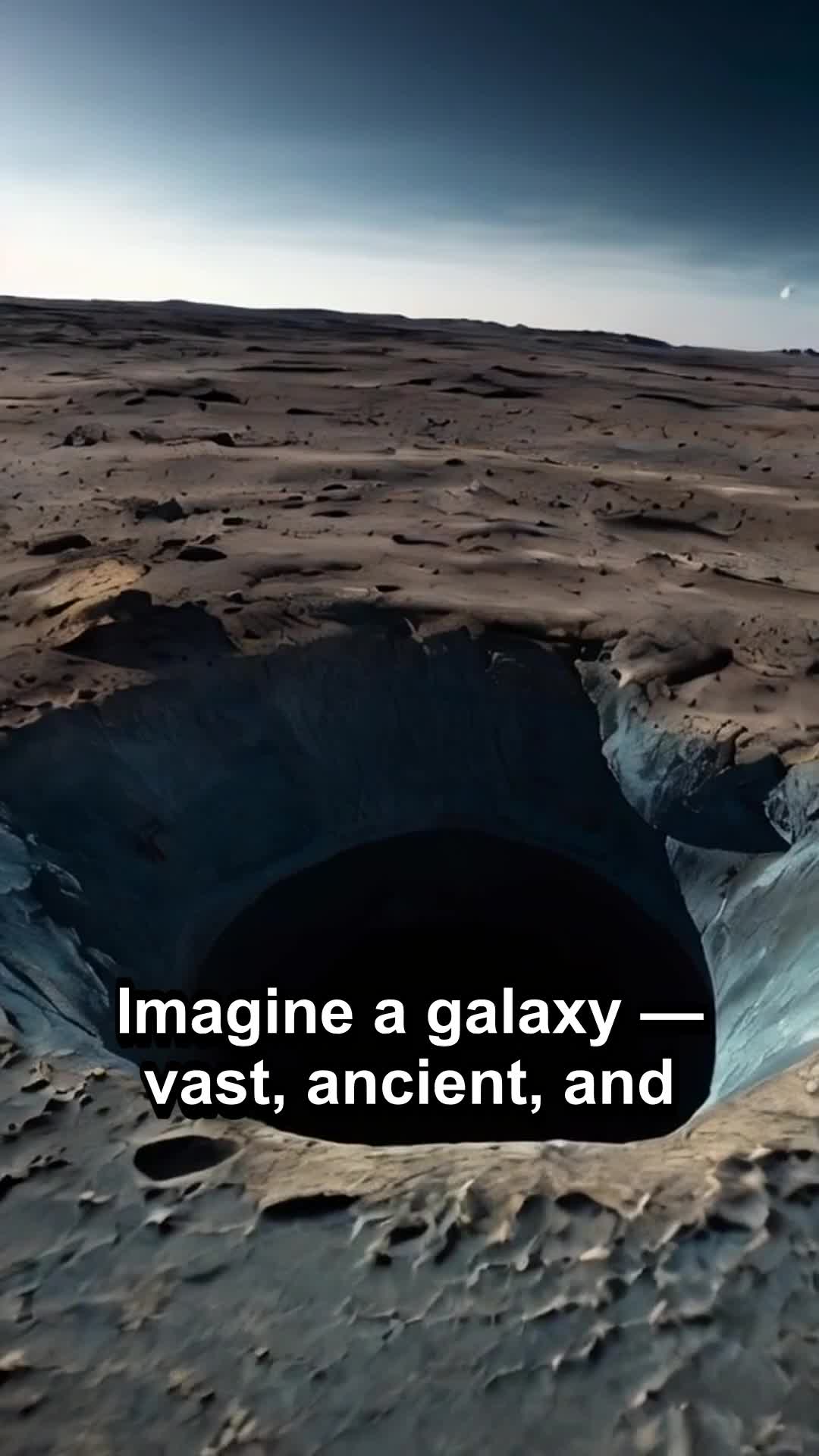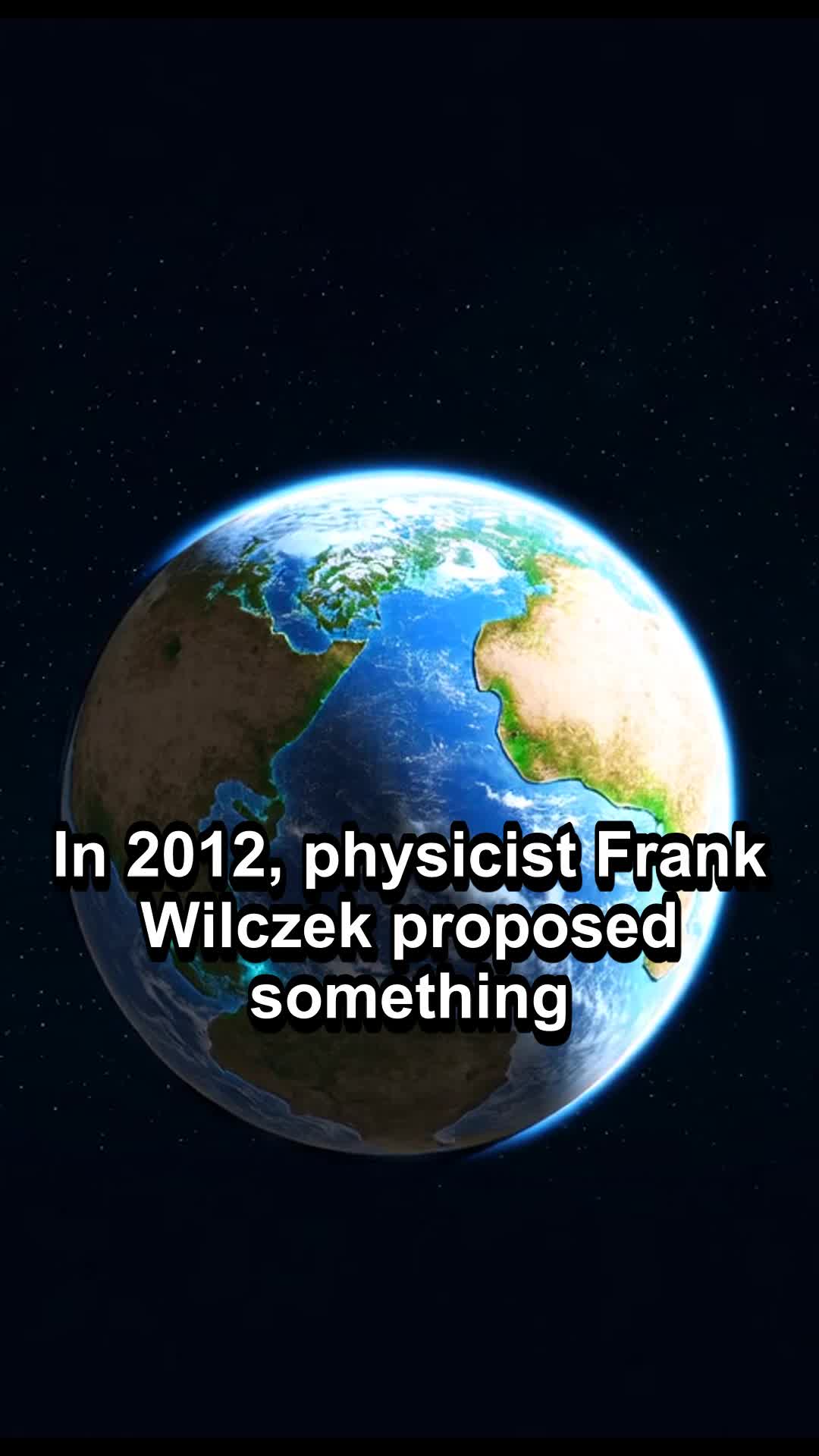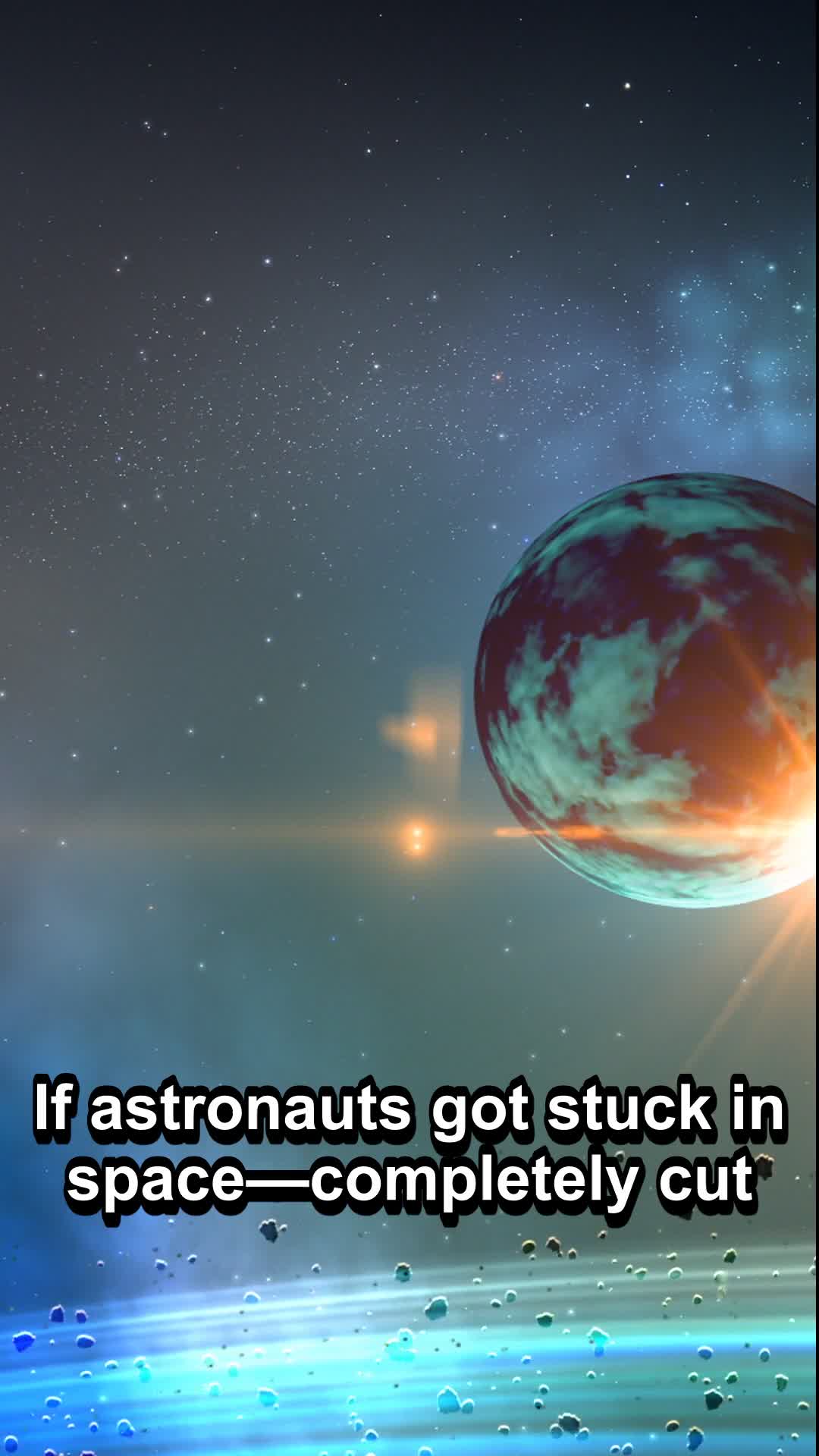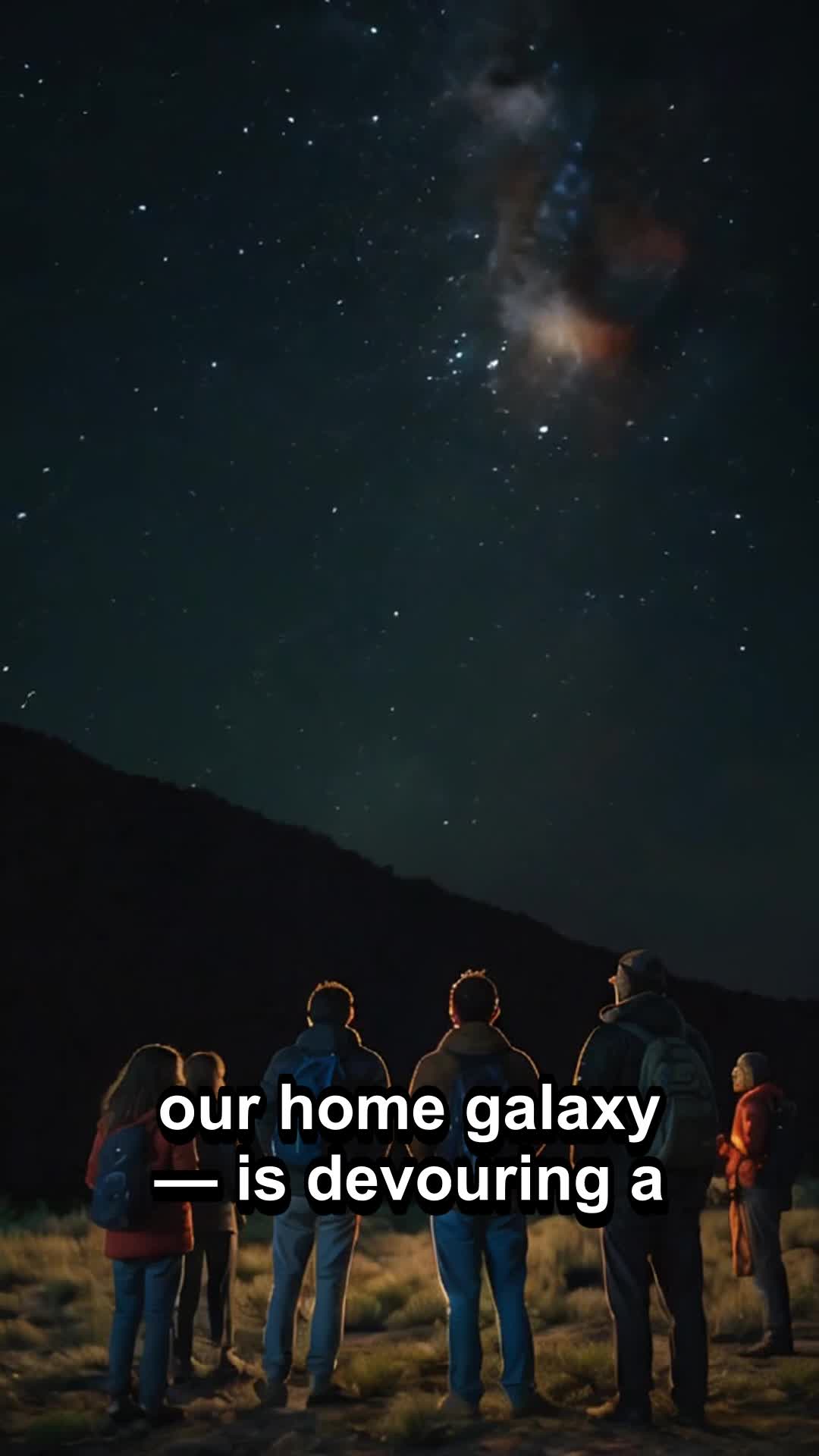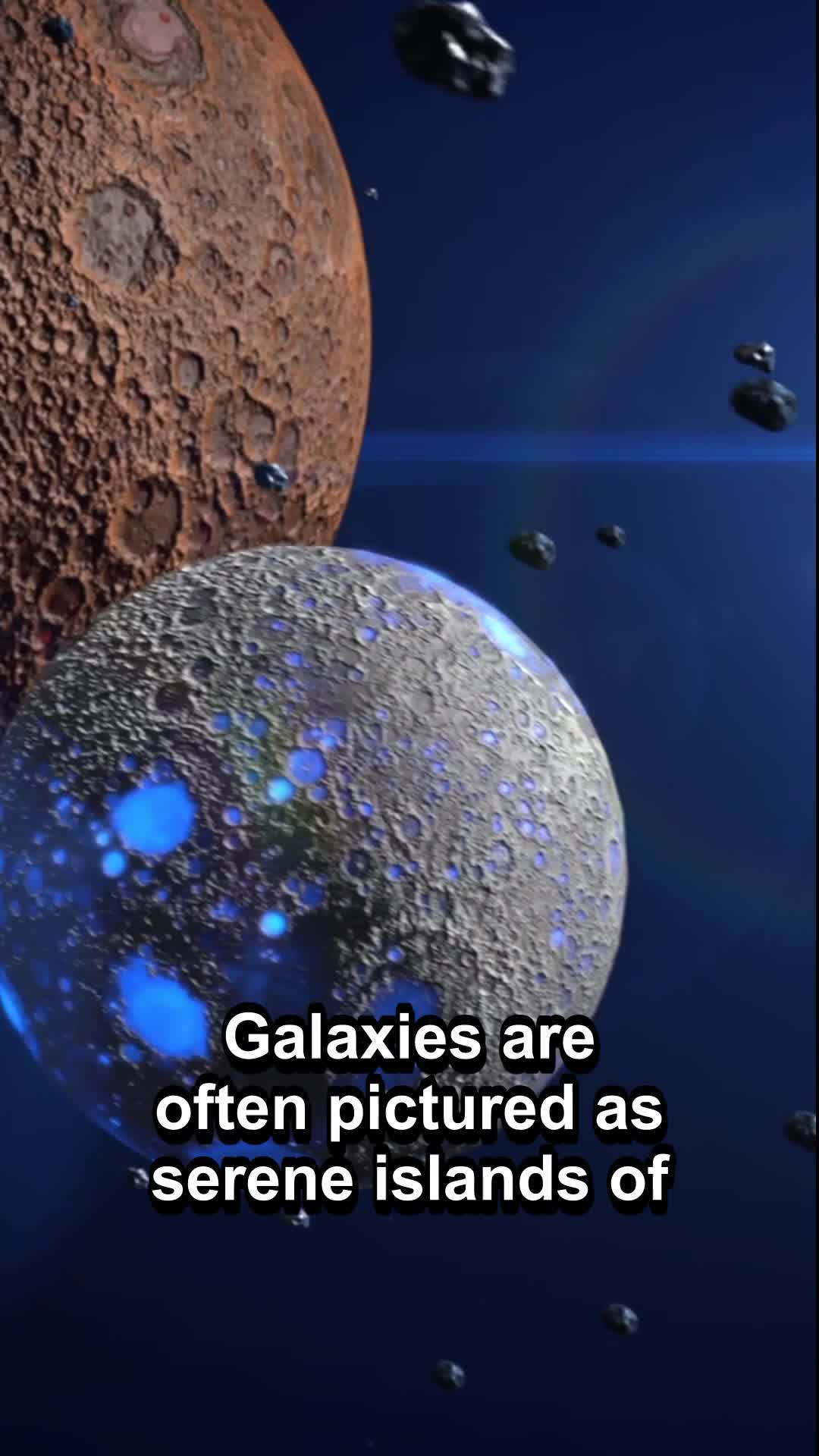Top videoer
In this eye-opening video, titled "Why Scientists Are Alarmed: Urgent Environmental Warning!", viewers are taken on a profound journey into the reasons behind the growing concern among the scientific community regarding our planet's future. The video begins with a series of interviews with renowned environmental scientists, each sharing their insights on the recent alarming trends in climate change, biodiversity loss, and ecosystem degradation. The narrative then shifts to a detailed analysis of the latest data on global temperature rises, melting ice caps, and the increasing frequency and severity of natural disasters. Through engaging graphics and compelling narration, the video illustrates how these changes are interconnected and pose a significant threat to human survival and well-being. As the video progresses, it explores the human activities that are exacerbating these environmental issues, including deforestation, pollution, and unsustainable agricultural practices. It also highlights the impact of these actions on wildlife and natural habitats, showcasing poignant examples of species that are now on the brink of extinction. In an effort to turn knowledge into action, the video concludes with a powerful call to action, urging viewers to take immediate steps towards sustainability. It discusses the importance of policy changes, corporate responsibility, and individual actions that can make a real difference. The video provides practical tips on reducing carbon footprints, supporting sustainable businesses, and advocating for stronger environmental protections. Overall, "Why Scientists Are Alarmed: Urgent Environmental Warning!" not only educates its audience about the critical environmental challenges we face but also empowers them with the knowledge and tools necessary to contribute to a sustainable future. It's a must-watch for anyone concerned about the health of our planet and the legacy we leave for future generations.
What would you do if a nuclear bomb exploded right now?
Most people have no idea — and that deadly mistake could cost lives. In this urgent video, you’ll learn the 7 critical steps you must take immediately after a nuclear attack to dramatically increase your chances of survival.
From finding instant cover to shielding yourself from deadly radiation, we cover the real, science-backed methods you can use to survive the unthinkable. Discover how to protect your body within seconds of the blast, how to identify the safest shelters, and how to purify your surroundings when every second matters.
You’ll also find out what you absolutely must avoid doing — because even a small mistake could be fatal after a nuclear explosion. Learn what supplies to have ready right now, how to reduce your radiation exposure fast, and why the first 48 hours after an attack are the most dangerous.
This is not just theory — these are real, tested survival tactics recommended by experts and disaster preparedness authorities. In a time of global tension, you can't afford to be unprepared.
Every second counts.
Every decision matters.
Your survival depends on knowing these steps.
Don’t let fear paralyze you. Arm yourself with the knowledge that could save your life and the lives of your loved ones. Watch this video till the end and be ready for anything. Stay alert. Stay alive.
In an awe-inspiring revelation that has intrigued astronomers and space enthusiasts alike, a new video titled "A Giant Wall Was Found in Space and No One Knows What Built It" delves into the discovery of a colossal structure in the cosmos, which has been aptly named "The Giant Wall". This detailed video provides an in-depth analysis of the findings by leading astronomers who stumbled upon this enigmatic structure, which stretches across millions of light years, making it one of the largest structures ever identified in the universe. The video begins with a brief introduction to cosmic structures, explaining how galaxies are not randomly distributed throughout space but are instead grouped into clusters, superclusters, and even larger configurations. It then transitions into the discovery of The Giant Wall, detailing the instruments and methodologies used by astronomers to detect such a distant and massive object. Through stunning visualizations and expert interviews, the video explores several theories about the origins and composition of The Giant Wall. Astronomers speculate whether this could be a natural phenomenon resulting from the vast forces at play in the universe or if it suggests something more, possibly hinting at structures influenced or created by advanced extraterrestrial civilizations. Furthermore, the video addresses the implications of such a discovery on our understanding of the universe. It questions the current cosmological theories and discusses how The Giant Wall fits into the larger puzzle of cosmic architecture. The narrative is enriched with insights from astrophysicists who ponder the role of dark matter and gravity in forming such massive cosmic structures. In addition to scientific analysis, the video also captures the human element — the sheer wonder and curiosity that such discoveries inspire. It concludes with a discussion on the future of space exploration and the technological advancements necessary to explore these distant cosmic phenomena more thoroughly. This video is a must-watch for anyone fascinated by the mysteries of space and the endless possibilities that lie beyond our current scientific understanding. It not only educates but also inspires viewers to look up at the stars and wonder what other secrets the universe holds.
In a captivating exploration of cosmic phenomena, the video "Mystery Unfolds: The Disappearance of a Galaxy Explained" delves into the startling observation of a galaxy that seems to have vanished from the night sky. This comprehensive analysis begins by introducing viewers to the specific galaxy in question, identified through telescopic images and data gathered over the past decades. As the video progresses, it presents expert interviews with astronomers and astrophysicists who discuss the possible scientific explanations behind this phenomenon. The primary focus of the discussion is on dynamic cosmic events such as black hole activity, galaxy collisions, and dark matter interactions that could potentially lead to a galaxy becoming obscured or invisible from our vantage point. The video uses stunning visual effects to simulate these events, providing a vivid and understandable representation of complex astronomical concepts. Additionally, the narrative explores historical precedents where celestial bodies have undergone significant transformations or shifts in visibility. It compares these instances with the current scenario, drawing parallels and noting differences. The video also highlights the tools and technologies used in modern astronomy, such as the Hubble Space Telescope and the James Webb Space Telescope, explaining how these instruments help scientists monitor and study galaxies far beyond our own Milky Way. Towards the end, "Mystery Unfolds: The Disappearance of a Galaxy Explained" discusses the implications of such a disappearance on our understanding of the universe and the future of astronomical research. It raises intriguing questions about the stability and longevity of galaxies, including our own, and what lessons can be learned from this mysterious occurrence. This video is not only a journey through the depths of space but also an invitation to think about the larger, often incomprehensible forces at play in our universe. It’s perfect for anyone curious about astronomy, the dynamics of galaxies, or the ever-evolving nature of our understanding of the cosmos.
This is a video about This Galaxy Is Eating Another One Right Now
Black holes are already terrifying — but some aren’t just massive traps of gravity... they are spinning monsters. Scientists have found black holes that rotate so fast, their event horizons — the "point of no return" — practically vanish from sight.
Follow : https://www.youtube.com/channe....l/UCnDJqQ6YxwnzhjIhn
The Coldest Place in the Universe Is Hotter Than You Think! In the deep reaches of space, far colder than anything on Earth, lies the Boomerang Nebula — the coldest known place in the universe. Its temperature drops to just one degree above absolute zero, colder than even the faint background radiation left over from the Big Bang.
Follow : https://studio.youtube.com/cha....nnel/UCnDJqQ6Yxwnzhj
Dive into the vastness of the cosmos with our latest video, "Exploring the Mysteries of the Universe: A Journey Through Galaxies." This visually captivating journey takes you through the awe-inspiring structures of the universe, from the well-known spirals of the Milky Way to the enigmatic and distant ultra-deep field galaxies. Starting with a brief introduction to what galaxies are, the video explains their role as the fundamental building blocks of the universe. We explore different types of galaxies – spiral, elliptical, and irregular – and discuss the unique characteristics and cosmic phenomena associated with each. The highlight of the video is the stunning visual imagery captured through advanced telescopes and rendered with state-of-the-art graphics. Viewers will see the beautiful spiral arms of the Milky Way, the massive elliptical galaxy M87 with its supermassive black hole, and the chaotic beauty of interacting galaxies like the Antennae Galaxies. Further into the video, we delve into the latest research and discoveries in astrophysics, explaining how galaxies form, evolve, and the pivotal role they play in the cosmic web of the universe. The narration helps demystify complex scientific concepts, making them accessible and engaging to a wide audience. We also pay tribute to the pioneers of space exploration and astronomy who have helped us understand our place in the cosmos better. The video concludes with a look at the future of galaxy exploration, including upcoming space missions and the next generation of astronomical telescopes. Whether you're a student, educator, or simply a curious mind eager to learn about the universe, this video promises to fuel your imagination and deepen your understanding of the cosmos.
In this fascinating exploration, we delve into the enigmatic world of the darkest known planet in the universe, a remarkable exoplanet that absorbs an astonishing 99% of the light that hits it. This video provides an in-depth analysis of this unique celestial body, beginning with its discovery and the innovative techniques astronomers used to detect its dark features. The journey starts with a brief overview of how exoplanets are generally discovered and the specific methods employed to find this unusual planet. The video highlights the role of the Kepler Space Telescope in this discovery and explains the significance of the planet's location and orbital characteristics. As we dive deeper, the video examines the composition and atmospheric conditions that contribute to this planet's extreme darkness. It discusses the scientific theories behind the absorption of light and how this relates to the planet's albedo. Experts in the field of astrophysics provide insights into the materials found on the surface of the planet, such as vaporized sodium and potassium, which are thought to play a crucial role in its light-absorbing properties. Furthermore, the implications of such a discovery are explored, considering what it tells us about the formation of planets and the potential for life in seemingly inhospitable environments. The video also speculates on the existence of other similar planets in the universe, discussing the ongoing research and future missions planned to explore these dark worlds further. To bring the cosmic story to life, the video includes stunning visualizations and animations that depict what the planet might look like, based on the data collected from telescopes and space probes. Additionally, interviews with leading astronomers and planet hunters offer a personal touch, sharing their excitement and the challenges they face in studying such a peculiar object. This video is not just a tale of discovery, but an invitation to wonder about the vast, mysterious universe. It challenges our understanding of what planets could look like and how they behave, pushing the boundaries of science and imagination.
Galaxies are often pictured as serene islands of stars adrift in a calm universe. But the truth is far more brutal. The cosmos is a battleground, and the Milky Way — our home galaxy — is a predator.
Right now, it’s devouring a smaller, fragile companion: the Sagittarius Dwarf Galaxy. Slowly, Sagittarius is being torn apart, its stars ripped into long streams that weave around the Milky Way like threads of a ghostly tapestry.
But this is not a rare event. Our galaxy has built much of its enormous size by consuming others. Over billions of years, it has swallowed dozens of smaller galaxies, leaving behind faint rivers of stars — silent evidence of past cosmic feasts. The very halo that surrounds the Milky Way is littered with the remnants of ancient victims. When you look up at the night sky, many of the stars you see could once have belonged to another galaxy entirely, now stripped of their past and reborn as part of our own.
Yet the story doesn’t end there. In about four billion years, the Milky Way will face a far greater force: the
Andromeda Galaxy. Drawn together by mutual gravity, these two giants will collide in a spectacular event, shredding and reshaping both galaxies into a new, larger creation. For all its history of conquest, the Milky Way is ultimately just another player in the universe’s endless cycle of destruction and rebirth.
Galactic cannibalism is not a rare exception — it’s the rule. Growth demands sacrifice. Existence demands dominance. In the grand theatre of the cosmos, every galaxy is both creator and destroyer. And we are living witnesses, riding the swirling edge of a predator that, one day, will be consumed itself.
Dive deep into the heart of cosmic violence with our latest documentary, "The Fury of the Cosmos: Unveiling the Violent Forces of Space." This captivating video explores the tumultuous phenomena that occur across the universe, shedding light on the chaotic yet fundamental forces that shape our cosmos. The video begins by setting the stage with a stunning visualization of the universe's vastness, highlighting areas where violence is a key player in cosmic evolution. From the explosive fury of supernovae to the relentless pull of black holes, the documentary covers a broad spectrum of astronomical events that exemplify the theme of violence on a cosmic scale. As the journey progresses, viewers are treated to high-definition imagery and animations of various violent cosmic events. The segment on supernovae explains how these stellar explosions are crucial for the synthesis of heavy elements which, in turn, are essential for life as we know it. The documentary delves into the mechanics of these explosions, illustrating the processes that lead to such spectacular outbursts. Next, the focus shifts to the mysterious and all-consuming black holes. The video examines the role of these gravitational behemoths in galactic dynamics, including their ability to rip apart stars and influence the growth of galaxies. Through expert interviews and graphical simulations, we explore how black holes are not just destructive forces but also key players in the universe's structure and evolution. The documentary also covers the violent collisions between galaxies, which lead to their eventual mergers. These cosmic encounters are demonstrated through a series of simulations that show the gradual process of galactic interaction, highlighting the formation of new star systems and the dramatic restructuring of galactic architecture. Throughout the video, expert astronomers and astrophysicists provide insights and commentary, adding depth and context to the visual spectacle. Their explanations help demystify the complex processes at play, making the violent universe more accessible and understandable to the viewer. In conclusion, "The Fury of the Cosmos" not only showcases the awe-inspiring power of cosmic violence but also emphasizes its necessity in the grand tapestry of the universe. This documentary is a must-watch for anyone fascinated by the forces of nature on the grandest scale.
In this captivating video, we delve into the enigmatic realm of rogue planets, astronomical objects that wander through space unattached to any star system. Unlike the planets in our solar system, rogue planets do not orbit a star. Instead, they drift through the galaxy, enveloped in darkness, making them some of the most mysterious celestial objects in the universe. The video begins by defining what rogue planets are and how they come to exist. It explains that these planets could be ejected from their original solar systems during the chaotic early stages of planetary formation or could have formed in isolation within a star-forming cloud. The narration is complemented by stunning visual animations that illustrate these complex processes in an easy-to-understand manner. Further into the video, we explore the scientific techniques used to discover and study these elusive planets. Techniques such as gravitational microlensing, which can reveal the presence of these planets as they pass in front of distant stars and momentarily focus their light, are discussed in detail. Viewers will gain an understanding of the challenges astronomers face in studying objects that emit no light of their own and are located at vast distances from Earth. The discussion then shifts to the potential implications of rogue planets on our understanding of the universe. Could these planets harbor life? What are the conditions on these wandering worlds? The video addresses these intriguing questions, drawing on the latest research and expert interviews to provide informed speculation and ongoing theories. Lastly, the video considers the future of rogue planet research. With advancements in space telescopes and detection techniques, our knowledge of these celestial nomads is expected to grow, opening new frontiers in astronomy and possibly reshaping our understanding of planetary science. This comprehensive guide to rogue planets is not just a scientific overview but an invitation to wonder about the vast complexities of our universe. Join us as we uncover the secrets of these lonely planets in our quest to understand the cosmos.
In this captivating video, we explore a lesser-known yet dramatic aspect of our solar system: the impending destruction of Mars' moon Phobos. The narrative unfolds with breathtaking visuals and expert interviews that delve into the cosmic forces at play. Phobos, the larger of Mars' two moons, is gradually spiraling towards the red planet. Scientists predict that within 30 to 50 million years, gravitational interactions will cause Phobos to either crash into Mars or disintegrate into a ring similar to those around Saturn. The video begins with a historical overview of Phobos, discovered in 1877 by astronomer Asaph Hall. We then transition into a detailed explanation of tidal forces, the gravitational interactions between Mars and Phobos that are drawing the moon ever closer to the Martian surface. Visual animations help illustrate how these forces are slowly altering Phobos' orbit. Experts in planetary science discuss the future scenarios for Phobos, including the potential for it to break up due to the Roche limit, where Mars' gravitational pull will exceed the structural integrity of Phobos. This segment is enriched with simulations showing how this dramatic event might look from Mars and how it could form a temporary ring of debris around Mars, potentially visible from Earth. Furthermore, the video explores the implications of Phobos' demise on future Mars missions, including those planned by NASA and other international space agencies. The destruction of Phobos could pose challenges for Mars' orbiters and potential surface missions, requiring new strategies for navigation and debris mitigation. In conclusion, the video not only highlights the dynamic and ever-changing nature of our solar system but also invites viewers to reflect on the broader impacts of celestial events on space exploration and our understanding of planetary evolution. This educational and visually stunning presentation is an essential watch for anyone intrigued by astronomy, planetary science, and the future of space exploration.
In this captivating video, we explore an extraordinary astronomical discovery: a galaxy harboring not one, but six black holes, all locked in a mutual orbital dance. This rare configuration presents a phenomenal scenario for astrophysicists and space enthusiasts alike. The video opens with a detailed animation visualizing the positions and movements of these black holes within their host galaxy. These massive entities, each with gravitational forces strong enough to warp spacetime, orbit each other in a delicate balance, showcasing a cosmic ballet of epic proportions. Throughout the video, expert astrophysicists explain the significance of this discovery. They discuss how the unique arrangement of multiple black holes in a single galaxy challenges our existing understanding of galactic formation and evolution. The video includes simulations that depict how such a system might have formed, possibly originating from a series of galaxy mergers that brought their respective central black holes into close proximity. Additionally, the video delves into the potential consequences of such a system on the surrounding galactic environment. Topics covered include gravitational wave emissions, which are ripples in spacetime caused by the black holes’ interactions, and their detectability by instruments like LIGO and Virgo. These waves provide crucial insights into events occurring billions of light-years away. The latter part of the video discusses the implications for theories of gravity and general relativity, with experts debating and discussing future research directions. Viewers are also treated to state-of-the-art visualizations based on real data, helping to demystify complex scientific concepts and bring the wonders of the universe closer to home. The video concludes by highlighting the ongoing efforts in astronomical research and the technological advancements enabling these discoveries. It encourages viewers to stay curious and engaged with space science, emphasizing the vast, unexplored frontiers awaiting further exploration.
Welcome to a deep dive into one of the most puzzling phenomena in modern astrophysics: galaxies that apparently lack dark matter. This video explores the groundbreaking discovery of galaxies such as NGC 1052-DF2 and NGC 1052-DF4, which have been observed to contain little to no dark matter, a finding that challenges our fundamental understanding of galaxy formation and composition. The video begins with a brief introduction to dark matter, a substance that, despite being invisible and detectable only through its gravitational effects, is thought to make up about 27% of the universe's mass-energy composition. Normally, dark matter is essential in the formation and structuring of galaxies, providing the gravitational glue that holds stars together in a galaxy. From here, we delve into the intriguing observations made by astronomers using the Dragonfly Telephoto Array. These observations of certain ultra-diffuse galaxies near the galaxy NGC 1052 have shown significantly less dark matter than expected, leading to intense scientific debate and research. Our expert host interviews leading astrophysicists who explain how these galaxies were discovered, the methods used to measure their dark matter content, and the theoretical implications of these findings. They discuss various theories that might explain the lack of dark matter, including interactions with other galaxies and the possibility of novel physics at play. The video also features stunning visualizations and animations that illustrate how galaxies are typically expected to behave and how these dark matter-deficient galaxies differ. These visuals help demystify complex concepts and make them accessible to both science enthusiasts and the general public. As we wrap up, the discussion shifts towards the future of space research, highlighting upcoming missions and technologies that may provide further insights into these mysterious galaxies. The video concludes by reflecting on how these findings could reshape our understanding of the universe and its fundamental laws. Whether you're a seasoned astronomer or just curious about the cosmos, this video is designed to provide you with a comprehensive understanding of why some galaxies don't have dark matter and the impact of these discoveries on the field of astrophysics.
This is a video about Time Crystals in Space The Physics That Shouldnt Exist
Imagine the vast, unfathomable expanse of space—an environment where the rules of Earth do not apply, and the margin for error is slim. "Trapped in the Void: The Perils of an Astronaut Lost in Space" is a gripping video that explores the harrowing scenario of an astronaut accidentally separated from their spacecraft, drifting helplessly into the cosmos. This detailed video begins by setting the scene in the cold, silent vacuum of space, where an astronaut on a routine mission faces an unexpected catastrophe. A failure in the spacecraft's docking mechanism during a spacewalk results in a dire situation: the astronaut is stranded, with limited resources and minimal hope for rescue. Through expert interviews and realistic CGI animations, the video delves into the physical and psychological challenges faced by the astronaut. It covers the immediate dangers of oxygen deprivation, extreme temperatures, and cosmic radiation. The narrative also explores potential rescue scenarios, examining both current technology and future innovations that could save lives in such extreme circumstances. "Trapped in the Void" also addresses the broader implications of space travel, emphasizing the importance of safety protocols, the advancements in space suit technology, and the rigorous training astronauts undergo to prepare for emergencies. It features insights from aerospace engineers, survival experts, and psychologists who discuss the resilience required to face such an ordeal and the teamwork necessary on Earth to orchestrate a successful rescue. The video not only captivates with its tense, edge-of-your-seat storytelling but also educates viewers about the realistic aspects of space exploration and the human factors involved. It serves as a stark reminder of the risks astronauts willingly accept to advance human knowledge and explore beyond our world. Concluding with a discussion on international cooperation in space rescue missions, the video highlights past incidents where astronauts faced dangers in space and how global efforts have evolved to ensure their safety. "Trapped in the Void" is an essential watch for anyone fascinated by space exploration, survival stories, or the limitless bounds of human courage and innovation.
In the vast expanse of the cosmos, a dramatic and awe-inspiring event is currently unfolding. This video, titled "Galactic Cannibalism Unveiled: Witness a Galaxy Devouring Its Neighbor," provides a stunning visualization and expert analysis of one galaxy absorbing another. The phenomenon, often referred to as galactic cannibalism, is a critical process in the evolution of galaxies. The video begins with a brief introduction to the concept of galaxies — massive systems consisting of stars, stellar remnants, gas, dust, and dark matter, bound together by gravity. It then zooms into a specific event where a larger galaxy, through gravitational forces, is pulling in and merging with a smaller neighbor. This cosmic interaction offers a rare glimpse into the dynamic processes that shape our universe. Expert commentary from astrophysicists and cosmologists provides deeper insights into the mechanics of this event. They discuss how the gravitational pull of the larger galaxy distorts the shape of the smaller one, leading to star formation, changes in orbital paths, and ultimately, the merging of galactic structures. The video uses high-resolution simulations to show how these colossal entities come together, with streams of stars and gas stretching across space, creating a spectacular display of cosmic artistry. The implications of such mergers are also explored. Viewers will learn about the role these events play in the life cycle of galaxies, including how they can trigger the formation of new stars and even the growth of supermassive black holes at the centers of galaxies. The video also touches on how studying these events helps astronomers understand the history and future evolution of our own Milky Way. In addition to the expert analysis, the video includes data from telescopes and space observatories, showcasing real images and animations to help viewers visualize the scale and significance of this galactic merger. The narrative is crafted to be accessible, ensuring that both astronomy enthusiasts and casual viewers can appreciate the complexities and beauty of the universe. To conclude, the video leaves the audience with a sense of wonder about the ongoing dance of gravity and motion in the cosmos, reminding us that even galaxies are not static but are continually evolving, interacting, and reshaping the fabric of the universe.
Embark on a captivating journey across the cosmos in our latest video, "Exploring the Mysteries of the Universe: A Journey Through the Galaxy." This visually stunning presentation takes you deep into the heart of space, showcasing the incredible beauty and complexity of our galaxy. From the swirling arms of spiral galaxies to the intense glow of nebulae and the enigmatic presence of black holes, this video offers a comprehensive overview of celestial phenomena. The video begins with a breathtaking view of the Milky Way, providing insights into its structure and the variety of stars that call it home. As we travel beyond our solar neighborhood, viewers will learn about different types of galaxies, including spiral, elliptical, and irregular galaxies, each illustrated with high-definition imagery and animations to enhance understanding. Key segments include an in-depth look at the formation of stars within nebulae, the dramatic lifecycle of supernovae, and the mysterious allure of black holes. What role do these cosmic giants play in the architecture of space? How do they influence the evolution of galaxies? These questions and more are addressed, providing viewers with a rich narrative that is both informative and thought-provoking. Moreover, the video discusses the significance of dark matter and dark energy in shaping the universe. With expert commentary from leading astronomers and astrophysicists, we delve into the latest research and theories that push the boundaries of what we know about the universe. "Exploring the Mysteries of the Universe: A Journey Through the Galaxy" is not just a visual treat; it's an educational experience that brings the wonders of the universe closer to home. Whether you're a space enthusiast, a student, or simply curious about the cosmos, this video will ignite your imagination and deepen your understanding of the universe.
